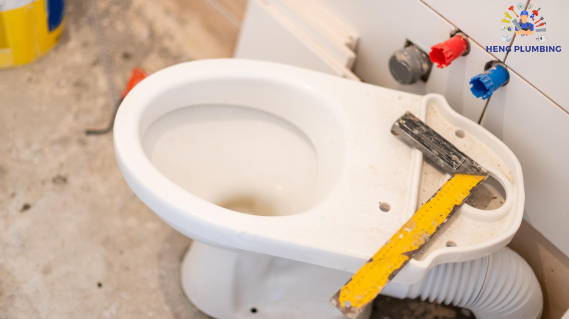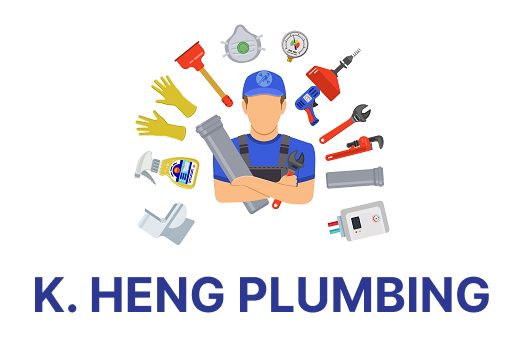 26 Jun 2023
26 Jun 2023
If you reside in a Housing and Development Board (HDB) flat in Singapore, you may find yourself in need of a new toilet bowl at some point. Whether you’re renovating your bathroom or addressing a faulty fixture, being aware of the HDB toilet bowl replacement process can help you plan and minimize any inconvenience.
In this blog post, we will guide you through the replacement process, providing a clear understanding of what to expect, how it will progress, and what measures you can take to ensure a smooth and efficient experience.
Dealing with Toilet Bowl Chokes
Being prepared for a potential toilet bowl choke is essential to avoid wasting time and water. Without any warning, your toilet bowl may suddenly drain of water, and a minor obstruction can cause the water to rise towards the top of the toilet overflow pipe. This situation increases the likelihood of recurring and more frequent toilet bowl chokes.
To help you address this issue efficiently and restore the proper functioning of your toilet, there are various effective techniques available to remove the obstruction. By familiarizing yourself with these techniques, you’ll be well-equipped to get your toilet working again.
Steps for the Replacement Process
1. Start Preparing for Replacement
Before commencing the toilet bowl replacement process, it is important to undertake the following steps:
- Conduct thorough research and select a reputable and licensed plumber or contractor who will handle the replacement.
- Communicate your specific requirements, preferences, and budgetary constraints to the chosen professional.
- Share any specific concerns or issues you may have regarding your current toilet bowl.
- Obtain the necessary approvals from the relevant authorities, such as the HDB, if required.
- Ensure that all valuable items and personal belongings are removed from the bathroom to prevent any potential damage during the replacement process.
2. Remove the Existing Toilet Bowl
During the replacement process, the existing toilet bowl will be removed. Here’s a breakdown of what you can expect:
- Water supply shut-off: The plumber or contractor will turn off the water supply to the toilet.
- Disconnection of pipes: The pipes connected to the water inlet and drainage systems of the current toilet bowl will be cut.
- Removal of bolts: The bolts securing the toilet bowl to the floor will be unscrewed and removed.
- Removal of the old toilet bowl: The old toilet bowl will be carefully lifted and carried outside the bathroom for proper disposal.
- Cleaning the installation area: The location where the new toilet bowl will be installed will be thoroughly cleaned, ensuring it is ready for the installation of the new fixture.
3. New Toilet Bowl Installation
After removing the old toilet bowl, the installation of the new fixture takes place. Here are the steps involved:
- Placing the new toilet bowl: The plumber or contractor will position the new toilet bowl over the flange on the bathroom floor.
- Securing with bolts and washers: Bolts and washers will be utilized to secure the flange in place. The bolt holes on the toilet bowl will be aligned with the flange for proper installation.
- Reconnecting pipes: The water intake and drainage pipes will be reconnected to the appropriate connections on the new toilet bowl.
- Ensuring stability and alignment: The plumber will ensure that the new fixture is stable and properly aligned, making any necessary adjustments.
- Creating a watertight seal: To establish a watertight seal, a fresh wax ring or gasket will be positioned between the flange and the toilet bowl.
4. Testing and Finishing
After the installation of the new toilet bowl, it is essential to verify its performance and add finishing touches. Here’s what you can expect:
- Checking for leaks: The plumber or builder will turn on the water flow and inspect for any signs of drips or leaks around the newly installed toilet bowl.
- Testing flushing and water flow: The toilet will be repeatedly flushed to ensure proper flushing and adequate water flow.
- Installation of additional features: If desired, the plumber or contractor will install the toilet seat and any other accessories, such as bidet attachments, according to your requirements.
- Clean-up and removal of debris: Any packaging materials or debris left over from the replacement process will be removed, and the surrounding area will be cleaned.
- Instructions and care: The plumber or contractor will provide you with instructions on how to properly care for and use the new toilet bowl, ensuring its longevity and optimal performance.
Conclusion
Replacing the toilet bowl in your HDB doesn’t have to be a daunting task. With proper preparation and adherence to safety measures, you can ensure a smooth and hassle-free process.
Remember to clearly communicate your requirements, adequately prepare your bathroom, and engage the services of a licensed specialist. By taking these steps, you can enjoy the benefits of a functional and upgraded toilet bowl that enhances both the appearance and performance of your bathroom.
K. Heng Plumbing is a reputable service provider in Singapore that specializes in HDB toilet bowl replacement, offering top-quality services to meet your needs.
